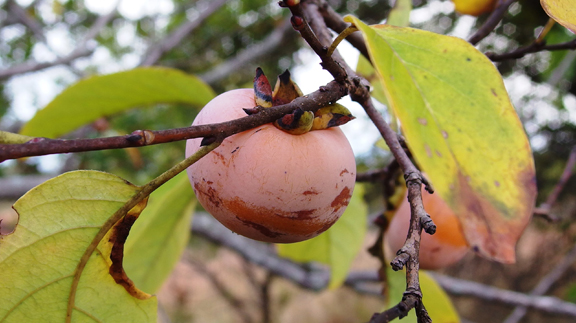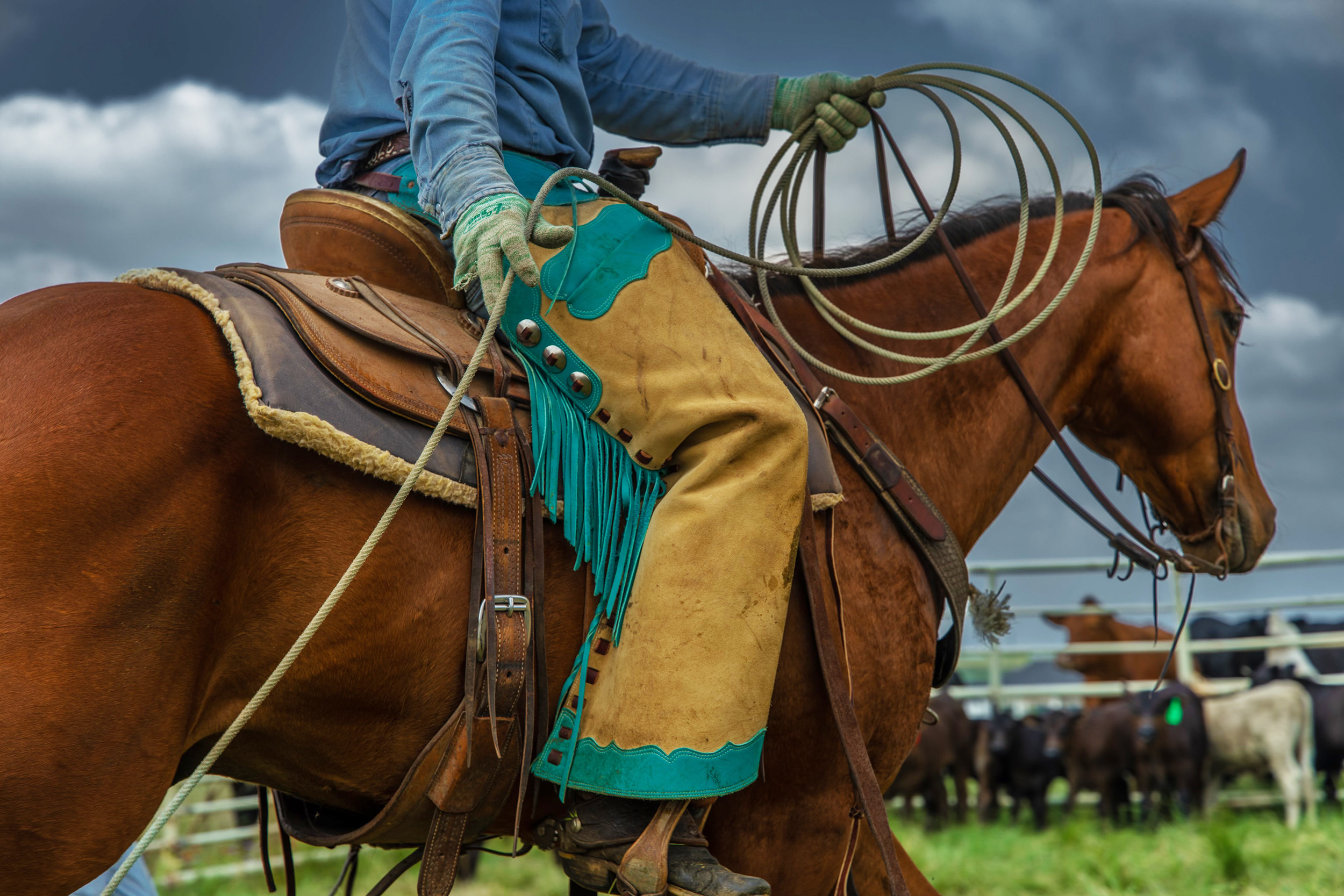Outdoor
Persimmon

By Lisa Bellows
The offer of an unripened persimmon to a novice can conjure up a good laugh. The alum-like tannins in the unripe fruit cause the mouth to pucker, draw and ultimately spitting will begin followed by some unkind words from the victim of the joke. It is one of my favorite instructional tactics for unsuspecting students. It is especially delightful when the tree hosts both ripe and unripe fruits so that I can eat one of the ripe persimmons and then offer a student one that is not ripe. I know full-well that the student wants to kick me in the shin, but considering that I award their final grade, they refrain.
You may have been told that a frost on the persimmon is necessary to ripen the fruit, but that is untrue. A shriveled appearance of the skin indicates ripeness. If the persimmon is taut and firm, it is best used for a prank but not a tasty treat. When the fruit is ripe, it is extremely sweet and loaded with fruit sugar. The wild varieties in North Texas can be eaten fresh, mashed and used to make fruit breads like pumpkin, pudding, a variety of sweet spreads and even beer and wine. One word of caution in addition to the mouth pucker from the unripe persimmon is that the skin is difficult to digest, so if you have a fondness for the sweet pulp, avoid eating the skins and merely squeeze the fruit out of the skin and enjoy.
To read more pick up the January 2015 issue of North Texas Farm & Ranch.
Outdoor
Grazing North Texas: Rescuegrass

By Tony Dean, [email protected]
If moisture is adequate, there are several winter annual grasses that dominate the landscape during early spring in Texas. One of the most common is Rescuegrass.
This winter annual is native to South America but grows over much of the United States and can be found in all ecoregions of Texas. Rescuegrass is easily recognized by its flat seed head.
Numerous seed heads produce seed that is transported by animals and can quickly spread to other areas.
To read more, pick up a copy of the April issue of NTFR magazine. To subscribe by mail, call 940-872-5922.
Outdoor
The Garden Guy

By Norman Winter | Horticulturist, Author, Speaker
The National Garden Bureau has designated 2024 as the ‘Year of the Angelonia’ and I am in full celebration mode. As I was preparing for my contribution to the celebration, I was, however, sent into taxonomic trauma.
For the last 26 years of deep love for the Angelonia, or summer snapdragon, I have told everyone via newspaper, radio and television that they were in the Scrophulariaceae family. Since most gardeners don’t like those words, I modified or simplified the snapdragon family, but somebody has tinkered with green industry happiness and moved Angelonia to the Plantaginaceae or plantain family. I immediately reached out to my friend Dr. Allen Ownings, Horticulture Professor Emeritus with the Louisiana State University AgCenter. I said, “Did you know this, or better yet, did you do it?” He said, as I expected, that the Taxonomist group had done it. This reminded me that someone once said taxonomists have to eat, too.
To read more, pick up a copy of the April issue of NTFR magazine. To subscribe by mail, call 940-872-5922.
Outdoor
Parting Shot: Grit Against the Storm…

By Jelly Cocanougher
Brazen rumbles cut through the daylight stillness. Enamored by the grandiose symphony of the firmament, tinged in anticipation from where the light will snap next.
The clouds dance in the sky as a love letter to the electrically-charged synergy of the ground and air. It moves unashamed, reckless, and bold. It is raw power that could command attention for any being, a reminder that we are attuned to the primal opus of flora and fauna. The spirit of the prairie was awakened, the hands of a cowboy rests at the heart of it all, a symphony in combination.
-

 Country Lifestyles1 year ago
Country Lifestyles1 year agoScott & Stacey Schumacher: A Growth Mindset
-

 Equine7 months ago
Equine7 months agoThe Will to Win
-

 Country Lifestyles7 years ago
Country Lifestyles7 years agoStyle Your Profile – What your style cowboy hat says about you and new trends in 2017
-

 Country Lifestyles4 years ago
Country Lifestyles4 years agoAmber Crawford, Breakaway Roper
-

 HOME7 years ago
HOME7 years agoGrazing North Texas – Wilman Lovegrass
-

 Country Lifestyles7 years ago
Country Lifestyles7 years agoDecember 2016 Profile, Rusty Riddle – The Riddle Way
-

 Country Lifestyles8 years ago
Country Lifestyles8 years agoJune 2016 Profile – The man behind the mic: Bob Tallman
-

 Outdoor9 years ago
Outdoor9 years agoButtercup or Primrose?






